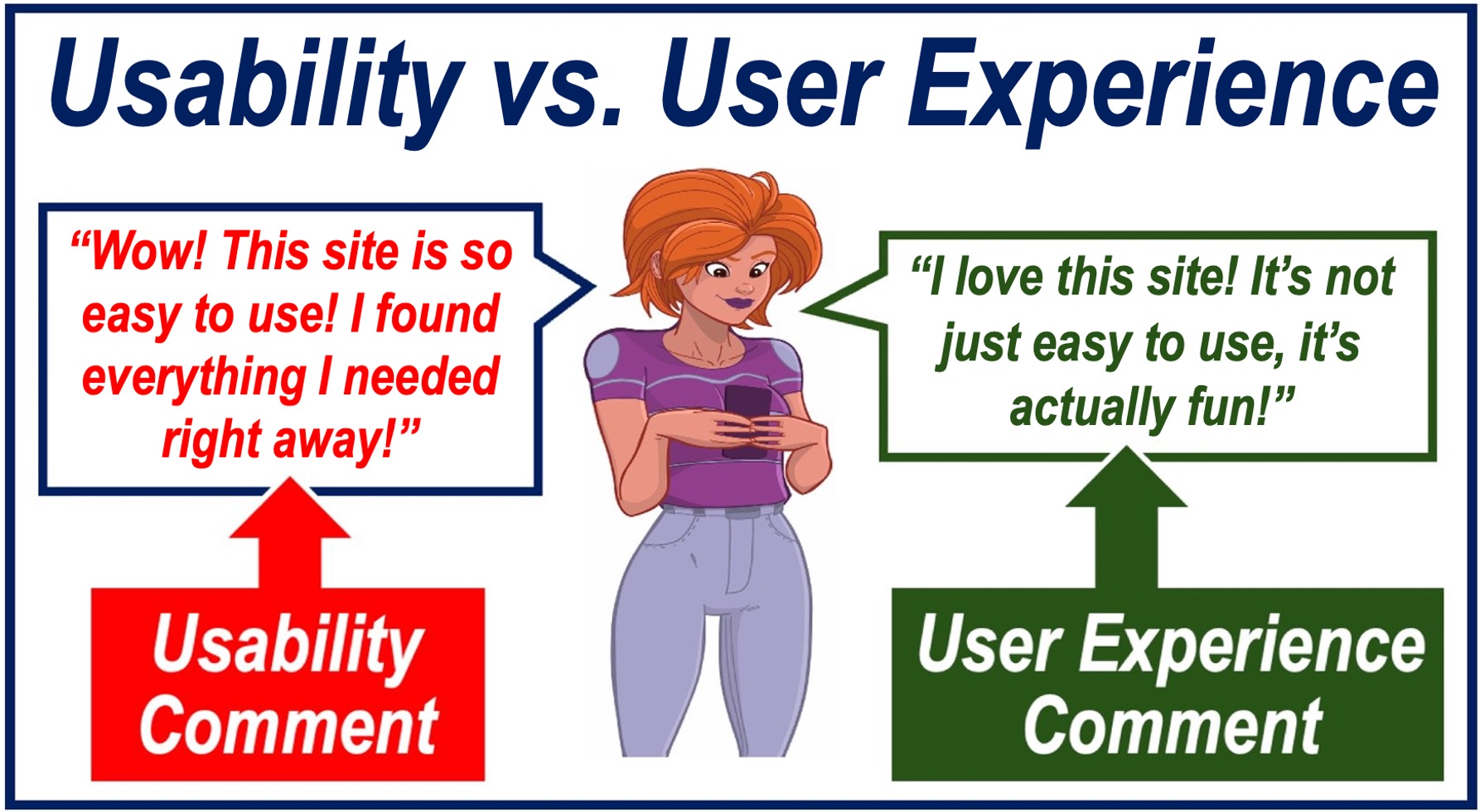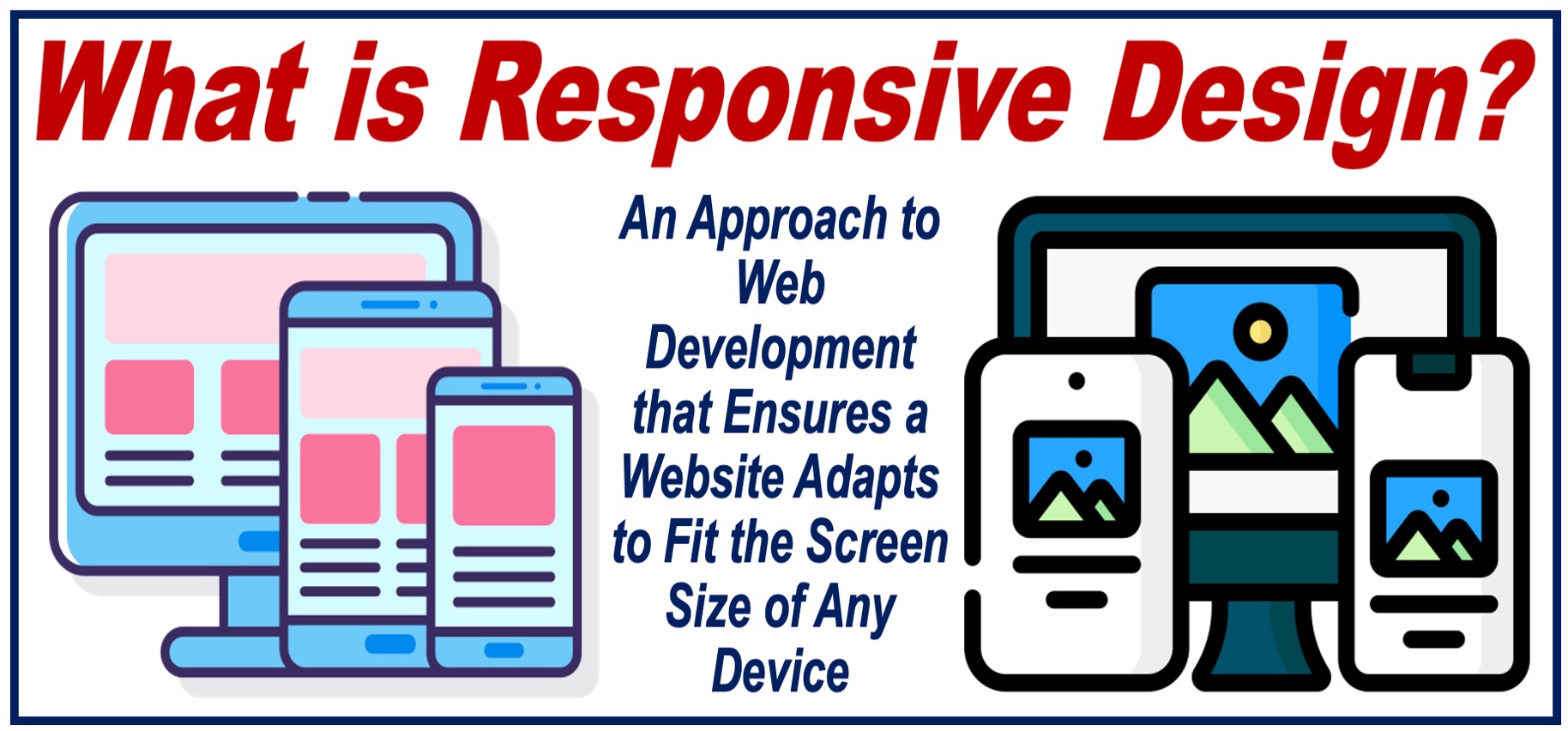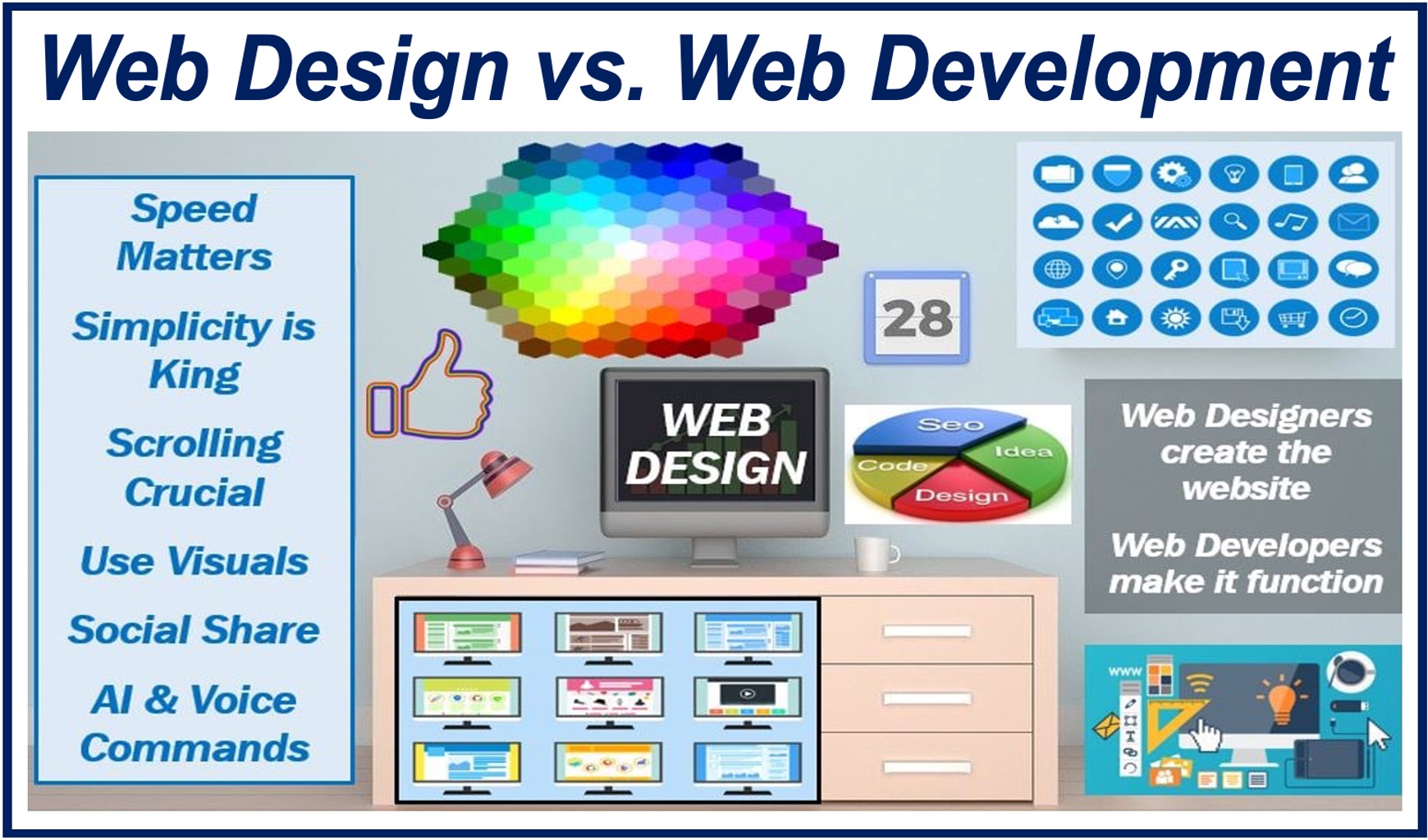Web Design or Website Design is the art and science of creating websites. It is the process of creating the visual layout, information architecture, user interface, and user experience of a website.
If you are a web designer, you are essentially the architect and artist of a website. You work to ensure the site is not only aesthetically pleasing but also functional and user-friendly.
The term first gained prominence in the mid-1990s as the World Wide Web began to expand rapidly. If you went back to 1985 and asked people what web design was, they would have no idea.
Techterms.com has the following definition of the term:
“Web design is the process of creating websites. It encompasses several different aspects, including webpage layout, content production, and graphic design.”
The Core Principles of Web Design
Let’s have a look at the four core principles:
-
Visual Appeal
This includes factors like color schemes, typography, imagery, and overall layout. Your website should be visually appealing and create a positive first impression. As is the case when humans meet for the first time, first impressions matter a great deal in the world of websites.
-
Usability

If you want your business to succeed online, its website must easy to navigate and understand.
Users should be able to find the information they need quickly and efficiently. This involves clear menus, intuitive layouts, and well-organized content.
If your visitors have trouble finding things, they are unlikely to stay long or return.
-
Responsiveness

Responsiveness, in this context, refers to how well your website adapts to different devices, such as desktops, tablets, and smartphones.
A responsive design ensures that the site functions seamlessly across all devices.
-
Accessibility
Designers should consider users with disabilities. You should use clear language, alt text for images, and ensure the website is compatible with assistive technologies.
“Assistive technologies” are tools and devices that help people with disabilities interact with digital content. These include screen readers that convert text to speech, screen magnifiers that enlarge content, and alternative input devices like speech recognition software for those who cannot use a keyboard or mouse.

Web Design vs. Web Development
The two terms are often used interchangeably. However, their meanings are not the same.
While web design focuses on the visual and user experience aspects of a website, web development transforms those designs into a functioning website. Web developers use programming languages like HTML, CSS, and JavaScript to bring the designer’s vision to life and make the website interactive.
-
An Analogy – Architect & Builders
Think of it this way: a web designer is like the architect of a house, creating the blueprint and overall aesthetic.
The architect plans the layout, chooses the materials (visuals), and ensures everything looks cohesive.
The web developer is then like the construction company, taking that blueprint and using their expertise (programming languages) to build the house, ensuring it’s functional and up to code.
Both web development and design are crucial for creating a successful website.
Interesting Quotes
Below are four web design quotes:
- “Great web design without functionality is like a sports car with no engine.”
Paul Cookson, Sales & Marketing Consultant, Canada. - “Design is not just what it looks like and feels like. Design is how it works.”
This quote by Steve Jobs, the co-founder of Apple Inc. and a pioneer of personal computing, is about design but is also very true regarding web design. - “Web design is not just about creating pretty layouts. It’s about understanding the marketing challenge behind your business.”
Mohamed Saad, Digital Marketing Specialist. - “Bad web design is like a Grumpy salesperson.”
Jakob Nielsen, Web Usability Consultant.
Final Thoughts
Web design is a crucial aspect of creating a successful website. It involves more than just making a site look good; you must have an understanding of how users interact with the site and ensure a smooth, enjoyable experience.
While web design and web development are both essential parts of the web creation process, together, they ensure that a website is not only visually appealing but also functional and user-friendly.
